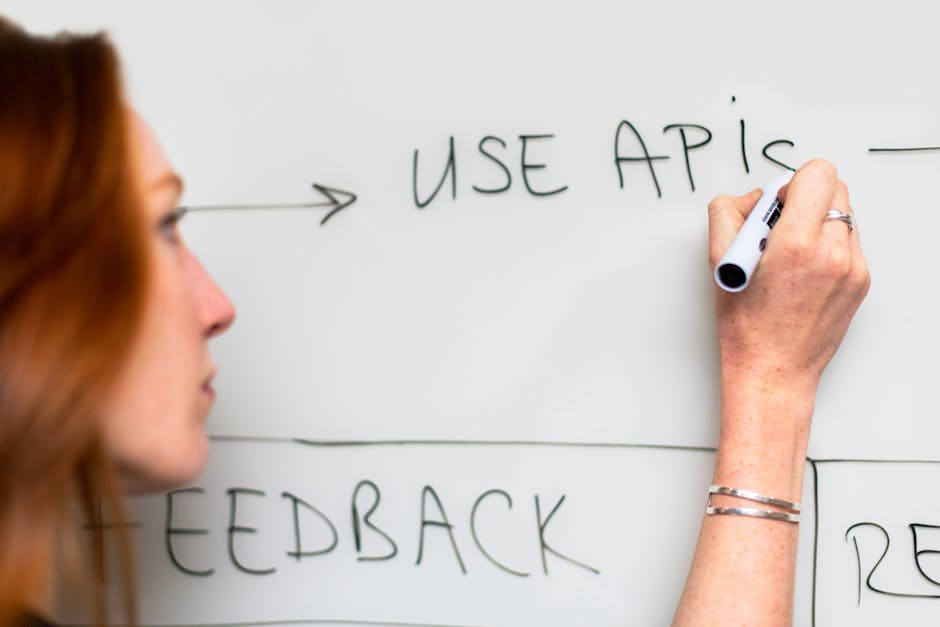Managing Versions and Lifecycles of APIS in Custom Software
Ah, the art of managing API versions and lifecycles in custom software – a delicate symphony of evolution and organisation awaits. Explore the domain where compatibility dances with chaos, and documentation leads like a conductor guiding a musical masterpiece. Embrace semantic versioning like a structured tango, gracefully deprecate APIs as outdated guests, and navigate the stormy seas of software evolution with agile adaptability. This intricate journey promises a blend of harmony and precision, where each step shapes a seamless software landscape. An adventure beckons, where each twist and turn reveals more about this enchanting world.
Key Takeaways
- Embrace semantic versioning for clear version control.
- Harmonise API documentation and security for a seamless experience.
- Gracefully deprecate old APIs with client support.
- API changes can disrupt software; agile systems are crucial.
- Backward compatibility saves software from chaos during updates.
Importance of API Versioning

Embrace the art of API versioning, for it serves as the compass guiding developers through the tumultuous seas of technological evolution.
Like a finely crafted timepiece, API compatibility is the cornerstone of software development.
Imagine this scenario: you release an API, users rejoice, the sun shines bright. But wait! You need to update it. Fear not, for with backward compatibility, you can keep the old while embracing the new. It’s like keeping your favourite pair of worn-out sneakers while strutting in a shiny new pair – a win-win situation!
API versioning isn’t just about numbers; it’s about maintaining harmony in the digital domain.
Imagine a world where every API change breaks existing code – chaos would reign supreme! But fear not, for API versioning swoops in like a caped hero, ensuring backward compatibility and saving the day.
Semantic Versioning Explained

Navigate the intricate domain of software versioning with the guiding principles of Semantic Versioning, where clarity and precision reign supreme.
In the wild world of version control, Semantic Versioning provides a structured approach to assigning version numbers to your software development projects.
Imagine this: you have a fancy software package, and you decide to make some changes. With Semantic Versioning, you follow a three-number system – Major, Minor, Patch.
When you up the Major version, it’s like a grand reveal – something big has changed, and it mightn’t play well with the older versions.
Minor updates are like adding a splash of colour to a room – noticeable but not a complete overhaul.
Lastly, Patch updates are the equivalent of fixing that annoying squeaky door – small, but necessary.
API Lifecycle Management Strategies

In the domain of software management, crafting effective API lifecycle management strategies is akin to orchestrating a symphony of technological evolution. Just like a conductor guiding a group of musicians, you must harmonise API documentation best practises and API security measures to guaranty your software masterpiece plays on without a hitch.
When it comes to API documentation, think of it as your musical score – clear, precise, and guiding developers through the intricate melodies of your API. Remember, a well-documented API is like sheet music: without it, everyone ends up playing a different tune.
Now, onto the security measures – the bodyguards of your symphony. Implementing robust API security measures is like hiring elite bouncers to keep out unwanted guests from your exclusive party. You wouldn’t want uninvited guests crashing your concert, would you?
Handling API Deprecation

Bid farewell to obsolete APIs gracefully, as if escorting an outdated guest out of your exclusive event with finesse and charm. Managing client communication during API phase-out is like delicately breaking up with a partner – you need to be honest, clear, and provide support during the shift to new endpoints.
Picture yourself as the bearer of bittersweet news, guiding your users towards a brighter future while acknowledging the past with a nod of gratitude.
Moving to new endpoints doesn’t have to be a dramatic affair; it can be a seamless journey if approached with tact and consideration. Keep your users informed every step of the way, offering them a roadmap to navigate the changes smoothly.
After all, APIs may come and go, but the relationships you build with your clients should stand the test of time.
Impact of API Changes on Software

Prepare yourself for the tumultuous symphony that unfolds when APIs undergo changes, as software is often left to dance amidst the chaotic melody of evolving interfaces.
The impact of API modifications on your software can be likened to a rollercoaster ride through a maze of uncertainty. Software updates become a nail-biting experience, wondering if your once seamless integration will now resemble a Picasso painting – abstract and confusing.
Compatibility issues rear their ugly heads, turning what used to be a harmonious user experience into a frustrating puzzle of errors and glitches. Your software’s adaptability is put to the test, requiring quick thinking and nimble adjustments to navigate the stormy seas of API changes.
It’s a wild ride of trial and error, where only the agile and resilient software can emerge victorious. So buckle up, dear reader, for the wild journey through the impact of API changes on your software.
Conclusion
In the world of custom software development, managing API versions and lifecycles is like taming a wild beast. It requires precision, agility, and the ability to adapt to ever-changing environments.
By utilising semantic versioning and implementing effective lifecycle management strategies, you can harness the power of APIs without getting bitten by unexpected changes.
Remember, in the jungle of software development, only the strong (and well-prepared) survive.
Contact us to discuss our services now!
